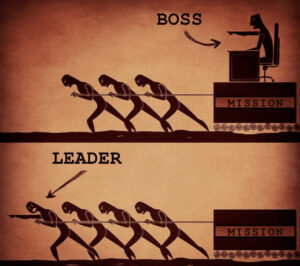Leaders going bad!
It only takes one person to make a real stand and bring about change within a system. It has been more than 50 years since teachers went on strike and refused to work. Prior to the COVID-19 pandemic, many teachers started leaving their jobs and careers in search of better opportunities. The pandemic has further accelerated this trend. What is the problem? There are numerous problems, as is the case everywhere and at all times. However, many of these problems can actually be seen as opportunities. Schools and their staff have the potential to create amazing learning environments. Will this happen? Yes, in some schools, but in most cases, no.

I have been a teacher for 22 years and have had eight different leaders. Out of these eight, two were truly exceptional at their jobs and effectively utilized their staff. One of them was not only competent but also a good person, while the other was quite challenging to work with. The latter managed 33 staff members for only 37 students, displaying rudeness and a lack of empathy towards others. Eventually, this negative impression led to a situation where he needed the support of his staff, but they all turned against him, except for me. He overreacted in a crisis situation, although, in my opinion, he did nothing wrong. However, when people dislike you and have an opportunity to get rid of you, they will. As a result, the school lost control, organization, and its reputation, despite still existing. On the other hand, the other good leader I worked with was in charge of a much larger school. He had started as a teacher and administrator in a smaller school before becoming a vice principal and then a principal. Despite his short stature, he never felt the need to compensate for it and maintained the same demeanor in all situations. I respected and liked him as my principal.
What made both of these administrators successful, in my opinion, was their ability to minimize ambiguity. In both schools, we had to sign in at the main office every day; failure to do so resulted in being marked absent. After five tardies, a warning was given. This was a clear-cut black-and-white rule—either you signed in or you didn’t. If you were angry for not coming on time or not signing in, you should direct that anger towards yourself. Lesson plans had to be submitted every two weeks, and failing to do so resulted in a written warning. Moreover, we had specific content to teach, and substitute plans were aligned with our instruction. Any staff member who had to go beyond their primary job was compensated with either pay or compensatory time off. These are a few of the protocols that were followed, which helped these leaders excel.

The remaining six leaders were vastly different. Out of the six, four were good people in my opinion, but they all struggled as leaders. Their struggle stemmed from their reluctance to create systems that effectively managed their staff, resulting in a lack of morning check-ins or sign-ins. They spent most of their time talking, sending emails, patrolling the hallways, and attending meetings. While these activities are necessary in education, they are not helpful without proper systems in place to manage people. In my first 13 years of teaching, I only had to cover a class for six weeks when a teacher on my team was involved in a serious car accident, and I was compensated extra for each day. However, last year, I covered 70 classes during my designated “prep” period without any compensation and received a heartless thank you. So, substitute teachers are paid for covering classes, but regular teachers are not.
Without delving further into this topic, I have a question:

Is it too easy to become a leader within an organization, resulting in a shortage of quality leaders today?
Is there a lack of good leaders?
Answer these question in the comments!










